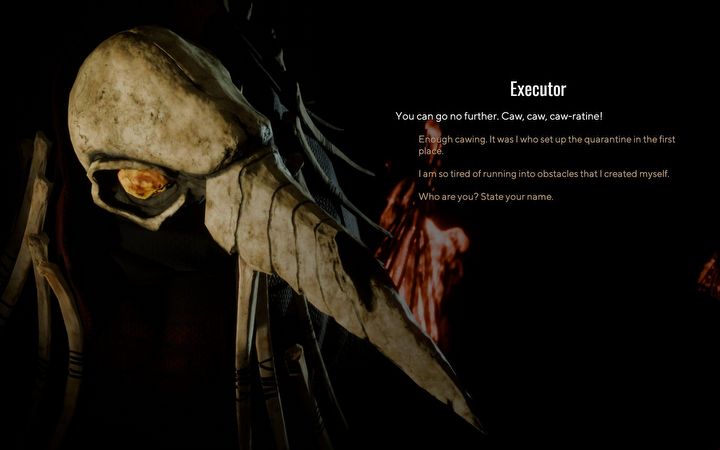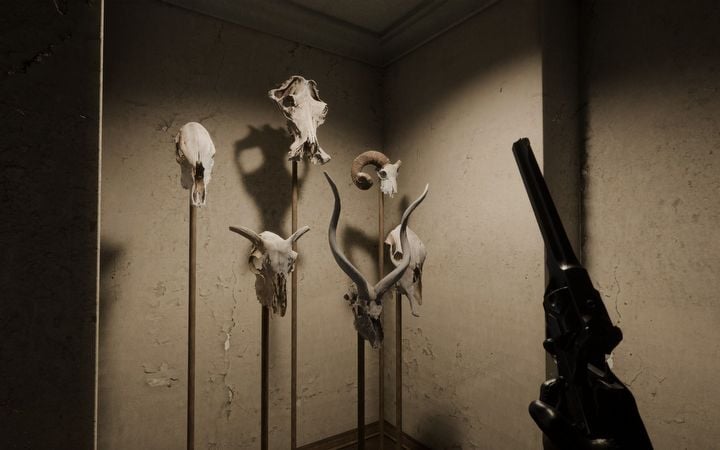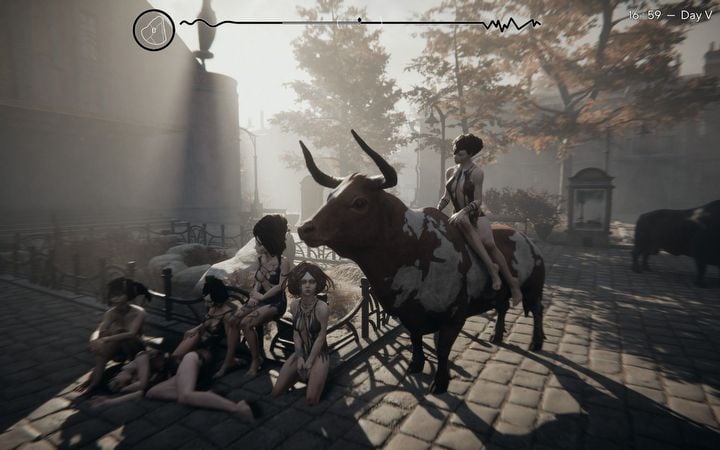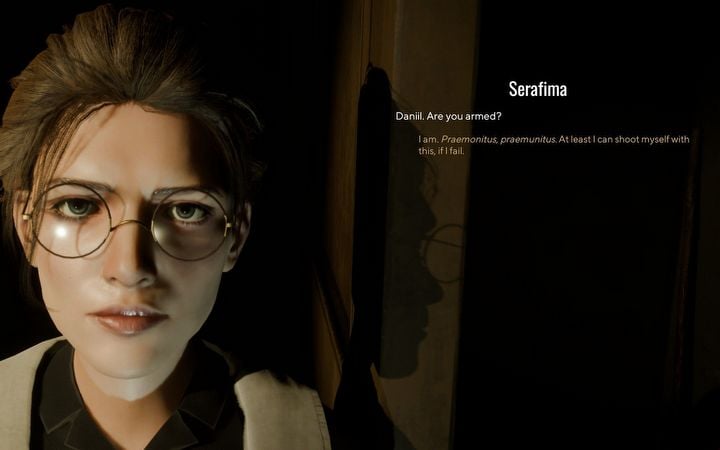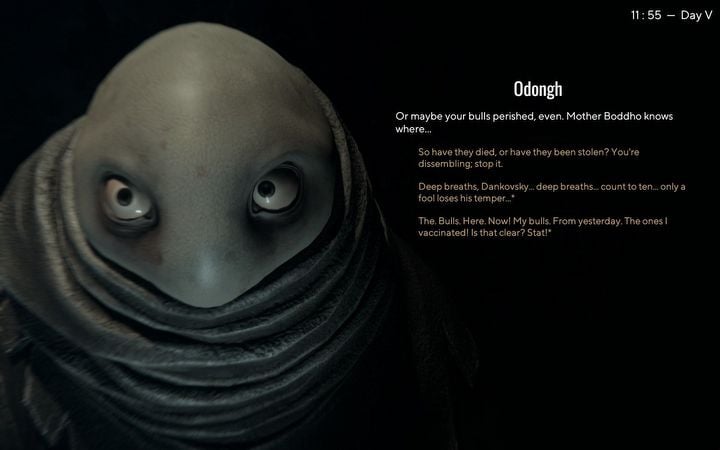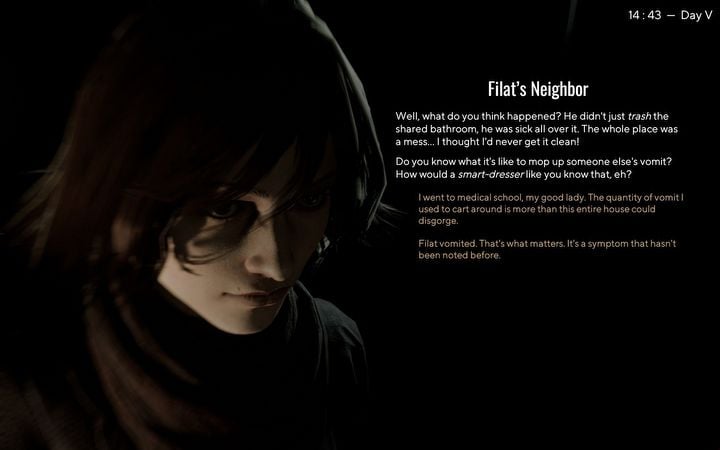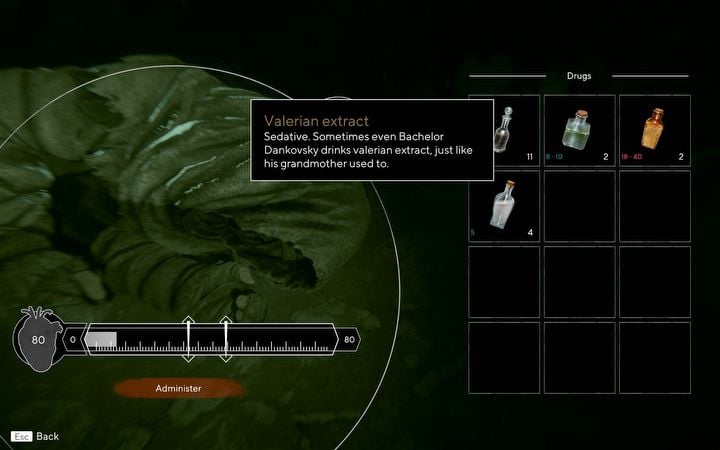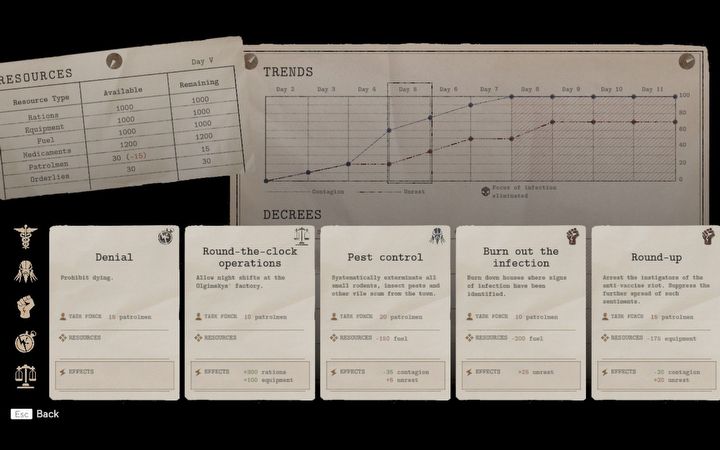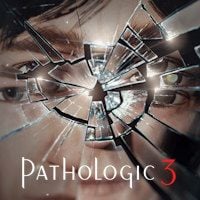Survival game in a world that is hard to bear. Pathologic 3: Quarantine is a short game about dying
This text was simply supposed to be impressions of Pathologic 3: Quarantine, but I'll admit something to you: I don't feel so good.
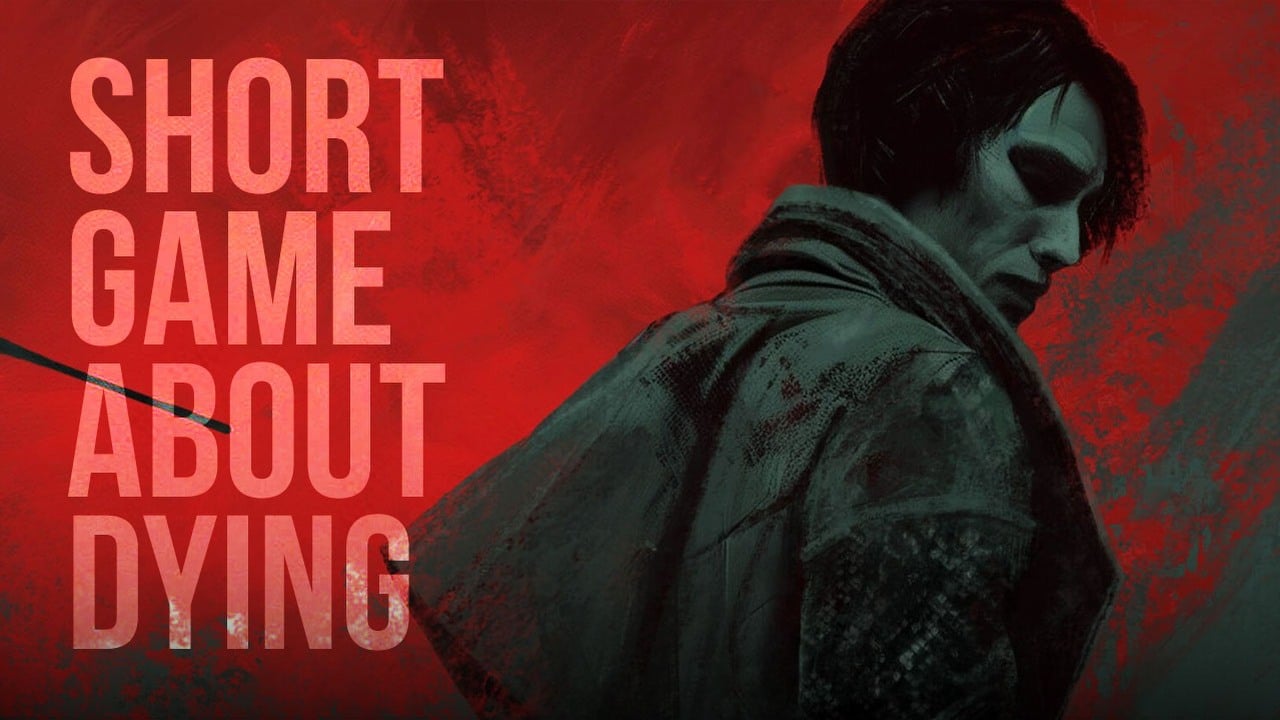
I'll admit I don't feel that well lately.
Some days feel overwhelming, just bad news and everything constantly deteriorating, so why even bother? Solve one problem, and three more appear, and things in general are ready to blow up. The worst part are trivial things that tend to make the biggest mess.
I could probably try and unwind in an online shooter or high-budget sandbox, designed and invented to give the impression of stable progress and control.
But I don't believe in power fantasy.
Pathologic 3 is a game about dying
This is a game about the various faces and forms of dying. It's also a game about how we sometimes have to go to incredible lengths to even do anything.
Pathologic – the entire series from the Russian studio Ice-Pick Lodge – has a long and tangled history and reinvents itself with each new installment. First was the original Pathologic, now available as Pathologic Classic HD. Don't begin with the first Patho, though, it's a game that addresses a very narrow audience, more of a curiosity than a title I could sincerely recommend – plus a terrible entry point to the series. Pathologic presented the same story from the perspective of three protagonists named Bachelor, Haruspex and Changeling. The plot started in the same way, but playing a different character altered many events, endings, and gameplay nuances.
Released in 2019, Pathologic 2 is more of a remake than sequel – although characters are aware of the events that have already taken place, the main premise was to tell the story in a way modern way – and to focus on survival mechanics. However, Patho 2 only let us play as Haruspex, the second of the original's playable characters. Pathologic 3, in turn, will feature that game's first playable character – Bachelor Daniil Dankovsky. Yes, if Changeling's story will be made in another 6 years, it will probably be titled Pathologic 4.
For now, a demo of Pathologic 3, subtitled Quarantine, appeared on Steam – and that's what I would like to talk about today.
Theatre of Cruelty
You could say that Pathologic is a narrative survival horror – just as you could say that Disco Elysium is an RPG about a policeman; it kind of is, but it doesn't fully convey the experience. There are many difficult games, some of them being downright ruthless in enforcing the player's masterful control of nuances. Few games are cruel.
Pathologic 2 was like that and in the first encounter with it, one cannot resist taking it as indifferent to the protagonist's misfortunes, the player's expectations and their comfort. The Pathologic series doesn't offer a sense of triumph nor control, and when we feel that we have finally fought out stability, Patho breaks the table and rewrites the rules. Completing it, at least in the first run, feels like crawling to the finish line.
However, let's focus on survival aspects and how they usually look in games. In this genre, games are fantasies about self-sufficiency, achieving everything independently, rising from ashes, and completely controlling one's environment. Pathologic is not like that.
It's the beginning of the 20th century. In a secluded town somewhere in the vastness of the Russian steppes, an epidemic breaks out, killing most of the infected within 24 hours. You're the only doctor available. You have twelve days.
I greatly appreciate Pathologic for giving its main idea full gravity. This epidemic is not an exciting backdrop that would happen a little here and there, it doesn't only occur in cutscenes, doesn't happen to others only. We have to survive in a city overwhelmed by a plague, and we can get sick just as easily as everyone else. Store prices are soaring, local authorities act chaotically, and people are losing their minds.
We still see emaciated mimes on the streets, their long limbs like spiders in masks. It's a world where one of the NPCs introduces himself as Judas Maccabeus, and we respond with a quote from Shakespeare. Everything is a bit strange here. It gets eerie when a university colleague denunciates us and we understand Dankovsky's motivation for proving he did everything to control the outbreak.
At the end of this article, I'll reveal what happens at the end of Quarantine, but only because it is instrumental to conveying the message of this game – and this text. If you'd rather avoid spoilers but find it interesting – the demo is available on Steam for you to try. Give it a try.
Jank
If we accept the category of eurojank, we must also accept the existence of slavjank, which is eurojank squared – seasoned with a solid dose of oppressive atmosphere and a kind of calm despair, because people living east of the Oder know that it can always get worse, and most likely – it soon will. Pathologic itself is, well, not the slickest game in technological terms. Did it bother me during over a hundred hours I spent with Pathologic 2? Not really. What bothered me in Quarantine were occasional crashes, but let's face it – it's just a demo, and besides, the developers have already released 3 patches, improving stability and introducing interface improvements suggested by community. This swiftness of response is a good omen for the full version.
Notes of a Young Doctor
Pathologic 2 was a survival game in the most basic, literal sense – fighting hunger, thirst, exhaustion, lack of sleep. Pathologic 3 is a survival game in the conditions of the overwhelming, chronic, unrelenting stress.
All sorts of mental health mechanics in games often boil down to "if you look at scary things, you will stop being effective for a while"; it's just hunger with a twist. In Pathologic 3, there's no perfect level of mental health that makes you safe – there's a relative state of mental balance that can slide into either apathy or mania, and each of these states is reflected differently in the gameplay mechanics.
Dankovsky constantly falls into apathy – because that's how strong, unending stress works; it makes you lack the strength to do anything at all. As apathy increases, our character moves slower, their vision blurs, and eventually, they can't even start a dialogue.
If this is not stopped, Dankovsky will simply take his own life.
On the other side of the – aptly named – polarity of mental well-being, there's mania; in Quarantine, Dankovsky's manic state is reached when he confronts the news that he would soon have to fight for his life in a very literal sense, as armed looters roam the streets, and the law enforcement is useless. Carried by these emotions, the protagonist almost floats, moving at a surreal speed, and it might seem that keeping him in this state would be desirable – until we notice that the high mania also drains his health bar. Both of these states, apathy and mania, can also be induced, because Dankovsky, like the protagonist of Bulgakov's A Young Doctor's Notebook, doesn't shy away from psychoactive substances, and his pockets stuffed with more than just morphine. Although Quarantine promises that Dankovsky will start building tolerance of individual drugs and will need more of them over time, the extent of this demo version isn't big enough to picture it.
However, his mood can also change without chemicals. Have you ever clenched your fists so hard that your nails dug into the skin of your palms, just to force yourself to take some action? Pathologic 3 offers a wide range of such interactions with environment – from kicking cans to reloading a revolver – which can temporarily pause the engulfing, paralyzing apathy. The most interesting of them concern the fact that Dankovsky suffers misophonia – he particularly dislikes certain sounds; it fits perfectly, because some environmental noises – swings on a playground, scratched vinyl records – seem to drill straight into the brain and sometimes clicking on these objects, I suffered equally. Getting through some stages of Quarantine felt like playing a game of directed self-aggression.
Pathologic is a game about dying.
Everyone Lies
As I mentioned, the Pathologic series reinvents itself with each installment, changing the mechanics. Dankovsky experiences these 12 days from a completely different perspective than Artemy Burakh, and when controlling him, we have different means at our disposal. We're no longer a self-taught shaman using vibe and homemade remedies; now we're real doctors with scientific methods, understanding patient diagnosis and using many Latin terms Dankovsky loves to flaunt.
We conduct interviews, looking for suspicious symptoms in the statements of patients who insist that they're not sick, and certainly do not drink alcohol at work, word. We conduct physical examinations – bright light immediately reveals potential disease changes on naked bodies, each part of which we can examine separately and from every angle. (I regret that this phase doesn't require more involvement from the player, as Dankovsky immediately points out all suspicious anomalies himself.) We mark confirmed symptoms on the patient's card, gradually narrowing the list of potential diseases down from a dozen to one or two. This is like a logic puzzle, such as "find 5 differences," and solving it gives a dopamine boost and a sense of accomplishment.
However, as the story of another doctor taught us, everyone lies, and certainly patients who do not want to admit what's killing them are lying. Similarly, the narratives of patients and the information we can gather from their bodies frequently fail to form a consistent picture. Of course, in such a case, one can make a rough diagnosis and move on, because let's face it – there are probably games whose structure will prevent the player from making a mistake in the art of medicine, but it's certainly not Pathologic. If we still feel obligated to fully assist the patient, we can conduct an environmental interview.
Of course, if we have the strength and resources. The demo is designed to provide these resources; in the full version of the game, it will probably vary at times. We're heading into town with a bag of strychnine for now.
At this point, I must state the biggest disappointment for me in Pathologic 3 – the abandonment of the grid-based inventory system. In Patho 2, I spent hours optimizing the arrangement of items such as bottles, beetles, eggs, and morphine in my pockets. Choosing between a button, a chestnut, or a scalpel could be a matter of life or death. Unfortunately, Pathologic 3 reverts to the first installment's system, where each item, regardless of size or quantity, occupies one inventory slot (the demo didn't show any weight limit). It's a shame because this resource management brought me much satisfaction.
"I won't give deadly poison to anyone, even if requested"
Roaming the streets not only gives us a chance to soak up the atmosphere and plan further steps. In the districts affected by the plague, we have the opportunity to test two more mechanics unique to Dankovsky.
The plaguefinder returns; the device also known from the first Pathologic can be used wind up and set in motion to temporarily disperse the foul miasmas hanging in the air. The second one is much more interesting, as it allows us to cast the Hippocratic Oath (in its original form) out the window and alleviate the suffering of those who can no longer be helped in any other way.So, Pathologic 3 basically features euthanasia – administering a specific, precisely measured and substantial dose, quickly enough so as not to prolong and multiply the suffering.
Pathologic is a game about dying.
To kill, we use exactly the same drugs that we use to regulate our own mood, so one might ask what could motivate us to voluntarily give up on substances that are crucial for us – it's certainly not altruism. The answer is paradoxical: without intervention, the sick person would have lived slightly longer, in agony and without hope, but having a bit more time. Through euthanasia, Dankovsky takes that time away. And he literally takes it for himself.
The resource of time, taken from others, is called an amalgamand I shall explain in a moment what we need it for.
In districts the plague hit the day before, you'll rarely find sick people – just looters. Anyone who's encountered these forbidden faces and heard "nu, davai" knows the experience. Haruspex, strong as an oak, could attempt to defend himself in the chaotic scuffle that Patho 2 had the audacity to call a "melee combat system," but thankfully, Dankovsky doesn't even have to try. He has a revolver and he won't hesitate to use it... once it's drum is loaded, slowly and carefully, bullet by bullet. You really have to keep track of how many bullets you've shot and have left.
Ammo is scarce and valuable in barter, so it's not always advisable to open fire on anything that seems dangerous. Fortunately, we can intimidate some folks by simply aiming at them – a temporary measure, but it can suffice on occasions.
"It's hard to defeat a dragon, but one must try"
In this single day in Quarantine you will die regardless of whether or not you've done everything perfectly – made the correct diagnoses, the right choices, and eliminated all the enemies. You'll die anyway, whether or not you mess something up along the way, you'll die as a consequence of a mistake that your character has made two days earlier, and which finally came around to backfire.
Throughout the day, rumors spread of growing fear and anger, which eventually peaked. Unable to fight the intangible, elusive plague, people turned their fury on the person who imposed the quarantine. You.
Pathologic is a game about dying.
Do you remember that time taken from others? We can use it to undo past mistakes, jump back to the days already lived and alter decisions that turned out to be wrong. With enough amalgam, we can lift the ineffective quarantine and issue a new order to control the city's chaos. We can order the cremation of bodies or grant additional rations to services to boost their morale.
We can, most importantly, try again – and again, and again, until we succeed, sometimes banging our heads against the wall, sometimes clenching our fists so hard that the nails dig into the skin of our palms.
Because you have to try.
And if sometimes, like me, you don't feel well – remember, it ain't that bad here. There's medication available that will help, there are people who you can turn to.
- Season 2 has just started, and Todd Howard is already writing the script for the third one. Fallout 5 will be changed by the TV show
- Bethesda envied CD Projekt RED? Starfield may undergo a Cyberpunk 2077-style metamorphosis
- AI „won't make The Witcher 5,” but CD Projekt Red doesn't despise it. Artificial intelligence isn't responsible for massive layoffs in the game industry
0

Author: Ann Garas
She finished Cultural Studies at the University of Gdansk, and then moved to Krakow, where she additionally completed Video Game Design and Research at the Jagiellonian University. In GRYOnline.pl, she was in charge of the Game Encyclopedia and the Filmomaniak movie database, occasionally supporting newsrooms by doing proofreading; currently, she is the head of the Editorials department. After work, she takes care of a constantly growing collection of houseplants and one cat named Zocha. Likes quirky, unusual, and gloomy games, although she doesn't mind cosy games about charming animals.
Latest News
- Discovery in RDR2 after 7 Years. Mysterious phenomenon appears only at night
- One Piece couldn't keep up and was beaten by the best new manga of 2025
- It's not the end of exclusive games, says former Sony executive. „If Mario starts appearing on PlayStation, that's the apocalypse”
- PoE 2 players complain about the „death” of the new season. All because of one exploit
- Free RTS that combines Command & Conquer universes with new missions and co-op mode
